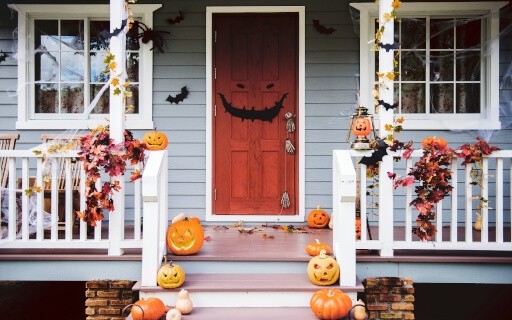According to a survey conducted by the American Pet Products Association (APPA), 67 percent of US households — about 85 million families — own a pet. Of those households, just over 63 percent own a dog and almost 43 percent own a cat. The number of households with a pet has steadily increased since 1988, when the study was first conducted. At the same time, PetFinder.com found that only about half of rental properties are pet-friendly, and only about nine percent of those that allowed pets did so without breed or size restrictions.
As a result, the vacancy rate for pet-friendly rentals is much lower, it takes less time to find new renters, tenants stay longer, and most landlords receive about twice as many applicants for an available pet-friendly unit than other vacancies. On average, it takes about 19 days to fill a pet-friendly rental, compared to roughly 30 days for rentals that are not pet-friendly. PetFinder.com also stated that the average cost for allowing pets is just over $200, but the benefits equaled almost $3,000.
According to the same survey, the greatest concern for landlords about allowing pets was the risk of property damage. But, while 85 percent of landlords reported having some amount of damage from allowing pets, the damage reported was minimal at about $400, less than the average cost of rent or the average pet deposit. The most common damage was pet odor and carpet stains. If you decide to allow pets in your rental, here are some things you can do to get rid of pet odors and stains.
How to Get Rid of Pet Odors in Your Rental
If your biggest concern is getting rid of the dog smell in your rental home after your tenant has moved out, there are a few steps you can take to have your rental smelling fresh again in no time.
First, vacuum all your floors, even the hardwood and linoleum. If your rental is furnished, vacuum upholstered furniture. Vacuum the window coverings, as well. Doing this will get rid of any fur and dander that’s lingering around the home.
You can have the carpets professionally cleaned, but don’t steam clean the carpet because the heat will set the stain permanently by bonding the protein to the carpet fibers.
Wash all machine-washable items with your regular detergent. Adding a one-pound box of baking soda to the wash (in addition to detergent) will help get rid of odors. If you still smell odor or see stains, rewash using an enzymatic cleaner.
Change all the filters in the HVAC system, including the return filter. Clean as much of the ductwork as you can.
How to Neutralize Pet Odor Naturally
If you don’t want to use harsh cleaners, there are a few ways you can eliminate odors naturally. After vacuuming, sprinkle baking soda on all rugs, carpeting, and upholstered furniture. Let that sit for several hours before vacuuming again. The baking soda will neutralize trapped odors on these surfaces, just as it eliminates odors from the refrigerator. Wait a few more hours and give it a final vacuum.
Next, take anything you can (rugs, throw pillows, curtains) outside and let the fresh air and sunlight remove any odor stuck within fabric fibers. Leave these out for several hours, as long as the weather is dry (not rainy or humid).
If there is still an odor and you can’t pinpoint the source, try using a handheld blacklight after dusk. Turn off all the lights and walk through the house. The blacklight will reveal any urine spots and other problem areas that you’ll need to spot clean.
Vinegar is a terrific all-round natural cleaner. Mix ¼ cup of vinegar with a quart of warm water. Test this mixture on an area of carpet that can’t be seen, such as inside a closet (vinegar doesn’t usually discolor carpet, but it’s a good idea to test it anyway, just to be sure). Spray the stain with the vinegar mixture and allow it to soak for several minutes. Blot with folded paper towels, pressing to remove as much liquid as possible. You can place a fan near the carpet to dry the area quickly. Once it is dry, sprinkle with baking soda, wait about 20 minutes, and vacuum. If the carpet still smells, reapply the vinegar solution.
How to Fix Dog Scratches on Wood Surfaces
Perhaps you’re concerned about the baseboards, wood flooring, and doors in your home. Dogs’ nails can damage these surfaces, especially when they are excited to see their owner returning home. If you find deep scratches on your wood doors or window frames, here’s how to fix them:
- Use coarse sandpaper to sand down the marks. This will remove any rough, raised areas and give you a smooth surface to work with.
- Wipe down the area with a damp cloth and allow it to dry completely.
- Find wood filler that matches the color of the surface you are repairing. Apply the filler with a small putty knife, making sure you fill the gaps completely.
- Wait for the filler to dry, then sand first with coarse sandpaper followed by fine to smooth it out.
- Wipe the area down once again with a damp cloth, wait for it to dry, then repaint or stain the area.
Make Your Rental Pet-Friendly
With just a few modifications, you can minimize the amount of pet damage in your rental. Here are some ways to make your property pet-friendly:
Pet-Friendly Flooring
If you want to allow pets but don’t want to deal with carpet stains and odor, consider installing pet-friendly flooring. Vinyl, laminate, tile, and sealed hardwood are easier to clean and are scratch resistant, making them ideal for pet-friendly homes.
Pet-Friendly Walls, Doors, and Windows
Use a semi-gloss or high gloss paint on the walls. This paint is much easier to clean, and the texture will keep pets from chewing and scratching the surfaces.
Add a scratch screen, such as Lucite panels, to doors and windows to reduce scratches. If you don’t mind the look of a kick plate, which is basically a sheet of metal, you can install this to the lower portion of the door to protect it from damage.
How to Make a Yard Pet-Friendly
If you have a yard, you might want to fence it in to make it easier for tenants to let their pets out. This will reduce the chance for accidents inside the home. It will also provide pet owners with a convenient, safe place to let their dogs run around off-leash. A well-exercised pet is less likely to cause damage indoors.
To make a pet-friendly area in the yard, try doing some hardscaping. A brick patio, for example, will give the dog less area to dig and make a mess. Add mulched areas to cut down on the amount of grass in the yard. Some types of grass, such as Bermuda grass, hold up better to pets and are less likely to burn from pet urine.
Consider installing a clover lawn instead of a grass lawn. Clover lawns rarely need to be mowed, require less weeding, are drought-tolerant, don’t need fertilizing, and they don’t discolor from dog urine, eliminating “dog spots.” Clover lawns are also much cheaper, costing only about $4 per 4,000 square feet.
Find Responsible Pet Owners
As much as you do to the rental itself to ensure pet-friendliness, you want to find responsible pet owners as tenants. Request a pet interview when considering a tenant. This will allow you to see how well-behaved (or not) the pet is, how the pet interacts with a stranger (you), and how attentive the owner is with the pet. Ask potential tenants to bring along the pet’s paperwork (latest vet visit with vaccination records, flea/tick medication, etc.) to the pet interview. You might also request pet references from groomers, pet sitters, and former landlords. In addition, make sure to screen your tenants. When you screen renters with Apartments.com, you can see credit, past evictions, and criminal history to help you make the best decision about the tenant you select.
What to Know About Pet Insurance
Require any potential tenant to have renters insurance. Their policy will lower the chance of litigation if the pet damages the property or bites someone.
Check your insurance policy to see if they have restricted dog breeds. If they have certain breeds on a “do not allow” list, allowing that breed could invalidate your insurance. (Emotional support animals are the exception to this rule.)
Have a Clear Pet Policy in Your Lease Agreement
Consider requiring pets be spayed or neutered, if it’s permitted by your state laws. Pets who are spayed/neutered won’t mark their territory as often, which could save your walls and floors from pet stains and odor. It also prevents unplanned litters. Neutered animals are also less likely to display aggression or dig holes under fences to escape.
Make sure you include a pet policy in your lease agreement. The policy should state that any tenant or applicant that wants to keep a pet will inform you first. If you want to set restrictions on breeds, number of pets, or weight, this should be stated in your pet policy, as well. Also make note of any pet deposits and pet fees. (Before charging pet fees, be sure to check your state laws to see if any of these fees are prohibited.)
Your pet policy can also set rules for pet owners, such as keeping the pets on a leash outside of the property. You can request that dog owners clean up after their pets and dispose of waste properly, prohibit tethering dogs on the property, and restrict the amount of time a dog can be left unattended in a fenced area.
Request a reasonable, refundable pet deposit. Making the pet deposit fully refundable will encourage tenants to take the necessary precautions to make sure damages don’t occur. Charging a one-time, non-refundable pet fee assumes damage will be caused. Pets won’t automatically cause damage that warrants additional rent or a nonrefundable deposit any more than your tenants will.
Even if you weigh the pros and cons and decide against allowing pets, be aware that service animals and emotional support animals are not considered pets and must be allowed. Not allowing these animals is a violation of Federal Fair Housing laws. Also, since they are not considered pets, they are exempt from any pet fees.
Steps to Take Between Renters
Before a tenant moves out, be sure to conduct a walk-through with the tenant. Take photos or video and note any damage the pet may have caused on your walk-through checklist. You and the tenant should sign and date this checklist at the end of the walk-through. Give your tenant a copy.
Conduct a walk-through before a new tenant moves in. Record any existing scratches or spots and take pictures throughout the rental. As with the move-out checklist, sign and date this form and give your tenant a copy for their records. This makes it easier to spot new damage when the tenant moves out and prevents the tenant from claiming the stain or damage was already there.
After any tenant, you’ll want to clean, patch and paint the walls, make minor repairs, and update the landscaping. With tenants typically staying at least a year, normal wear and tear is expected. This doesn’t change if the rental is pet friendly. You may have some additional concerns like pet odor, stains, or scratches, but these are typically easy to repair.
Deciding to allow pets has many benefits and challenges. Knowing what to do when faced with those challenges will make allowing pets in your rental easier. Be clear about your expectations, get everything in writing, and document as much as possible. With a little planning, even your four-legged tenants will be happy.











